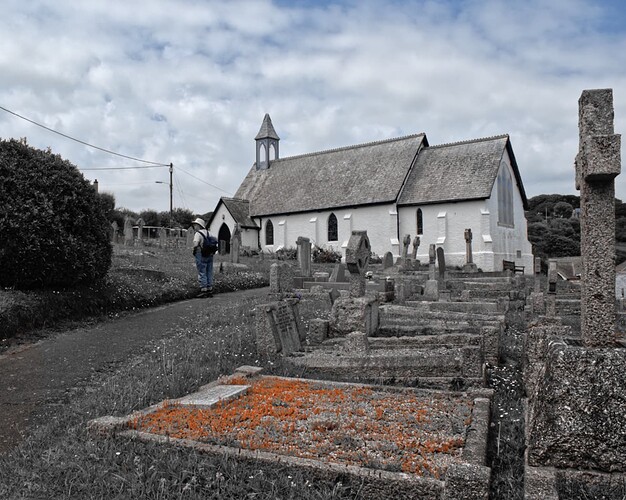Ah! Yes. I’d forgotten to mention that. Thanks for the reminder
He said he thought it looked dull, so why not make it pop? 

And you are correct, all was done exclusively in PL5!
I checked Nikon AF-S DX Nikkor 18-55mm f/3.5-5.6G VR - DxOMark, for sharpness indicating f8 to be the sweet spot, while the photo was taken with f11, 1/125sec. – So, for next time … 
Its an old image and a camera I no longer have but this thread has thrown up so much info. I am so grateful. @Lost_Manc, Re night shift and true tone. The former is off and the latter is, well was, on  What is the adverse impact of True Tone?
What is the adverse impact of True Tone?
It changes the tonality to what Apple think it should be. It is an enemy of calibration
Slight shifts in tone as @Joanna states.
You can see this by opening PL and turning it (True Tone) on and off. Even if the image appears the same the grey workspace of PL should become ‘warmer’ when on vs off. When off the grey to my eyes looks ‘better’.
Is this how you want it or is this the “flat and lifeless” image?
That is one I quickly worked up after taking on board some of the tips on here. It is better than where I was.
Just tried that. See what you mean - on the image I selected the change was very noticeable.
Well, to start with the Tone Curve and to check black & white point is an old (good) habit from PS-times, while later I had to develop with LR. – I still hope DxO will introduce a similar picker to choose the Tone Curve’s correction points straight from the pic – and also underlay a (luminance) histogram.
I tried your way to see what works better, but ended up with a pic too bright and had to make use of the exposure slider or the Tone Curve. Considering this, I feel there is more control to fix black & white point first – but nothing religious. 
Then I noticed, that you used another control line to fix the wall of the church. Instead of Microcontrast
I experimented with ClearView to ‘break’ the white and also enhance the structure – looks better.
Anyway, I go for a not so chrunchy rendition (less midst & black contrast), but that’s a personal thing.
Joanna, have you and/or @wolfgang found significant differences between following following the ‘flow’ as PL has the tools arranged vs. what Wolfgang does ‘the other way around’? I have heard the argument that developers lay the tools out in an efficient manner.
This may open a rabbit hole to go down but it may be worth exploring which ‘flow’ leads to better quality and results without a lot of back-and-forth through the pallets?
From a technical point of view, the order in which we push sliders does not matter, because PhotoLab will apply corrections in a sequence of its own. This sequence has been covered in the forum a while ago. If I find that thread, I’ll add the link here.
My first steps includes colour rendering. Changing profiles can have a big impact and make previous settings useless. Next are the tone curve and contrast tools, then whatever it takes.
Going through the settings iteratively is fairly okay imo. Once we learn how far to push a slider, the number of iterations can be reduced.
I rearranged the palettes in the order that I found them most useful, but not in order of use, just groupings.
As @platypus says, the order of application is determined by DxO and is not relevant since PL is a parametric editor that doesn’t rely on order.
Which tool I use first depends on the content of the image - there have even been some images that needed no treatment at all.
I took up this point here.
Pascal
Thanks for everyone’s input, which reinforces my established methodology. Thanks too @Pieloe for the excellent tutorial… most helpful. 
Just go on with what you feel the most convenient.
 that was a good one…
that was a good one…
Since this is your first post in these forums, I would ask how long you have been using PhotoLab to come to this conclusion?
White slider is not required because you can use exposure to set the whites. Smart Lighting can be considered the equivalent of Auto Exposure.
Coming from other programs can make PL feel strange but once you work with it you will find it very effective.
